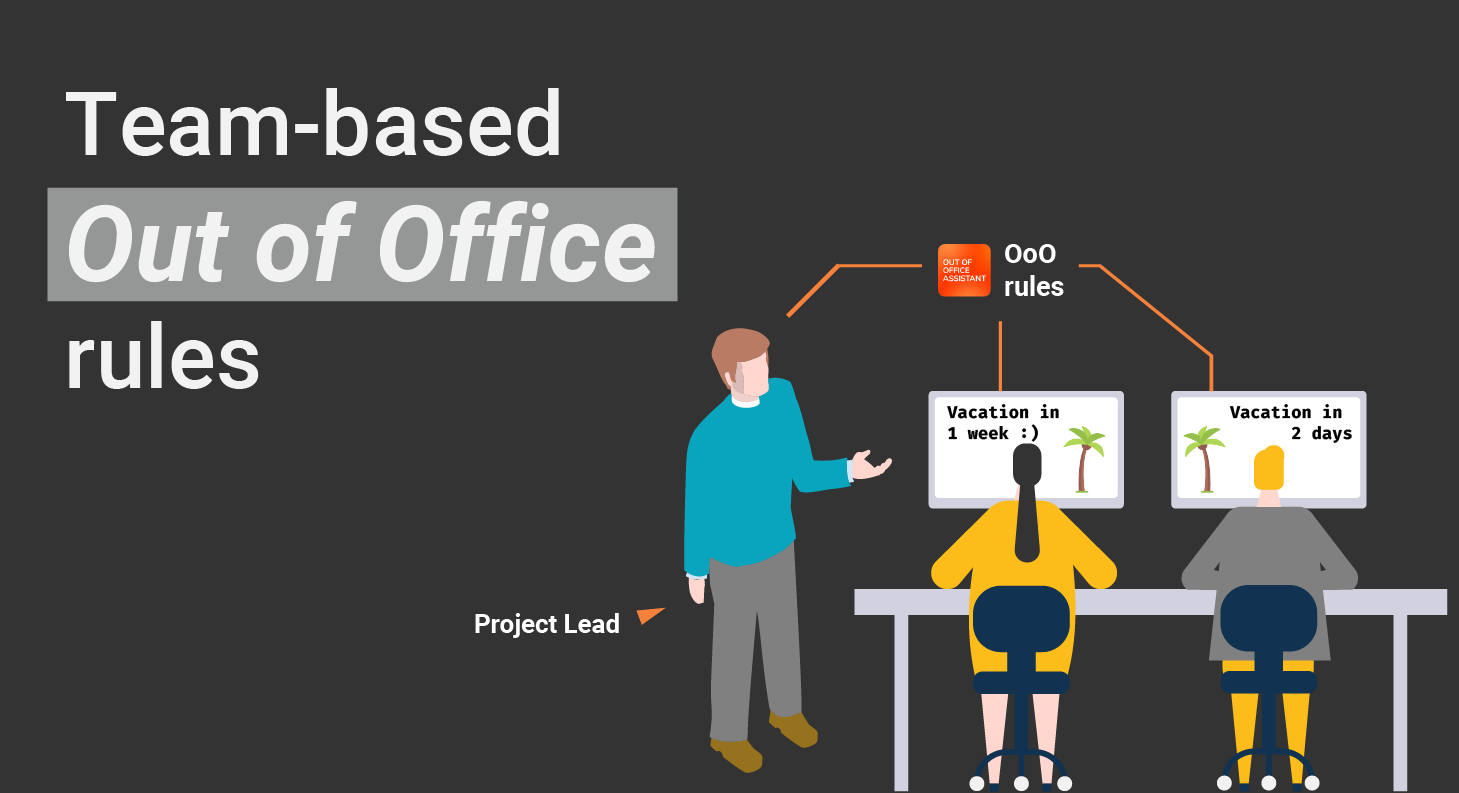Jira is a powerful tool for managing work. But what if I told you it can be used for the opposite?
All you need to get rid of work is Out of Office Assistant and a zap.
In this article we show you 10 different ways to put up a Jira vacation manager so your issues don’t pile up on your board while you’re on that great trip to Sardinia. With just a few clicks, you’ll be able to automatically assign incoming work to colleagues who are on duty. Meanwhile, you’ll be at the beach enjoying a well-deserved daikiri!

So why wait? Start using Jira today to take a break from Jira!
Keep reading about Out Of Office
Prerequisites for your most mindful vacation
Throughout the article we will be activating Out of Office Assistant for Jira. We’ll need this app for Jira Cloud to:
- Alert collaborators that you won’t be working during your vacation
- Reassign issues automatically to other users
Note that the app works for Jira Software, Jira Service Management, or Jira Work Management.
Each zap will trigger Out of Office Assistant from a different external apps. We’ve selected a range of services, from the classic Outlook and Google Calendar to trendy HR SaaS from startups like Personio or Factorial. But the idea is always the same: connect Jira to whatever other software you’re using to schedule your time off. With Zapier, Out of Office for Jira should connect to wherever it is you plan your vacation with. A perfect replacement for your long-sought Jira calendar, and a perfect complement for those of you who do capacity planning in Jira with tools like Tempo Planning.
In order to use the templates, you will need:
- A free or premium Zapier account
- An account of the app used for the trigger
- A subscription to Jira cloud
- A subscription to Out of Office Assistant for Jira Cloud
Zapier templates to schedule your vacation in Jira from your calendar
What calendar do you use to schedule all your work meetings and to block your time off? Is it Outlook? Google Calendar?
No worries. We’ve got them covered! And if iCalendar is your personal preference, just sync it to one of these options to make it work.
Outlook – The legacy king
Outlook is the de facto standard for calendar scheduling. And I have nothing against it in general. It’s evolved pretty well from the oversaturated UI into something way simpler and more manageable that still retains more features than other email systems.

Creating Out of Office messages still has a legacy flavor. They’re a bit easier to find in Office365, although you’ll have to search for the additional settings. But you won’t be able to use them in Zapier, as they can’t be captured with any existing trigger.
There are good workarounds though:
- Our recommended approach is to create a dedicated calendar for team vacations, so any new event in that calendar activates the zap.
- Alternatively, you can use the filtering options on the Out of Office action to define which events should be considered time off. Follow our documentation here. Make sure to define a condition that won’t create false positives, like a classic team meeting to discuss when everyone will take their vacations.
Google Calendar – Best Out of Office manager
Google Calendar makes it really easy to connect with Zapier. Since it has a dedicated event type for Out of Office notifications, this field can be mapped in the zap. Every Out of Office event in Google Calendar can become a new rule in Out of Office! This means that users don’t have to go into Jira to reassign their tasks: it’s enough for them to add an event in Google –the perfect workflow for anybody who uses Google Calendar on a daily basis!
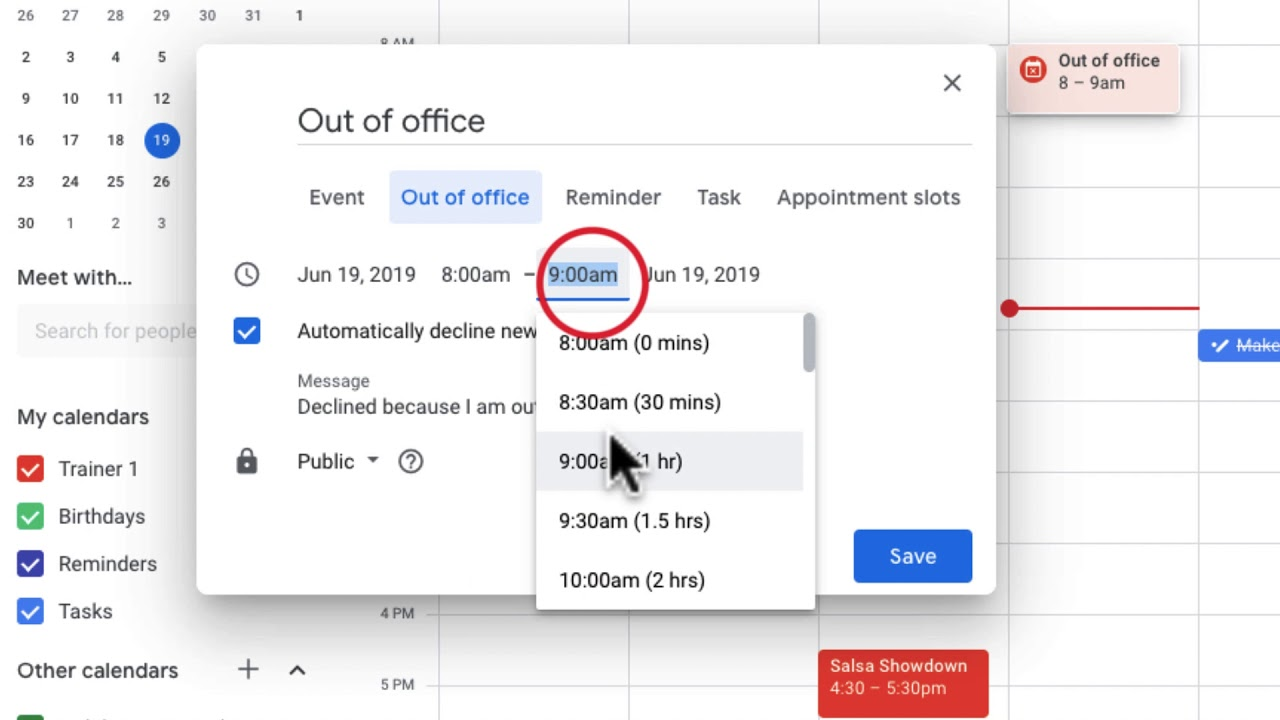
This means that it’s not necessary to have a dedicated vacation calendar or to create an ad hoc filter like you would have on Outlook. Your absences in Jira will only activated when Out of Office rules are created on Google Calendar. Never when someone creates a reminder to plan their vacation or to discuss vacations in a meeting with the rest of the team.
TeamUp Calendar – Best for complex scheduling
A few companies seem to have some kind of TOC disorder that makes them schedule many different employees at the same time. I’m kidding. They do schedule overlapping events, but it’s because they have a very unique business model. For example, a company that sends technicians onsite to take care of damages may have 8 professionals spread out into as many locations dealing with completely different issues.
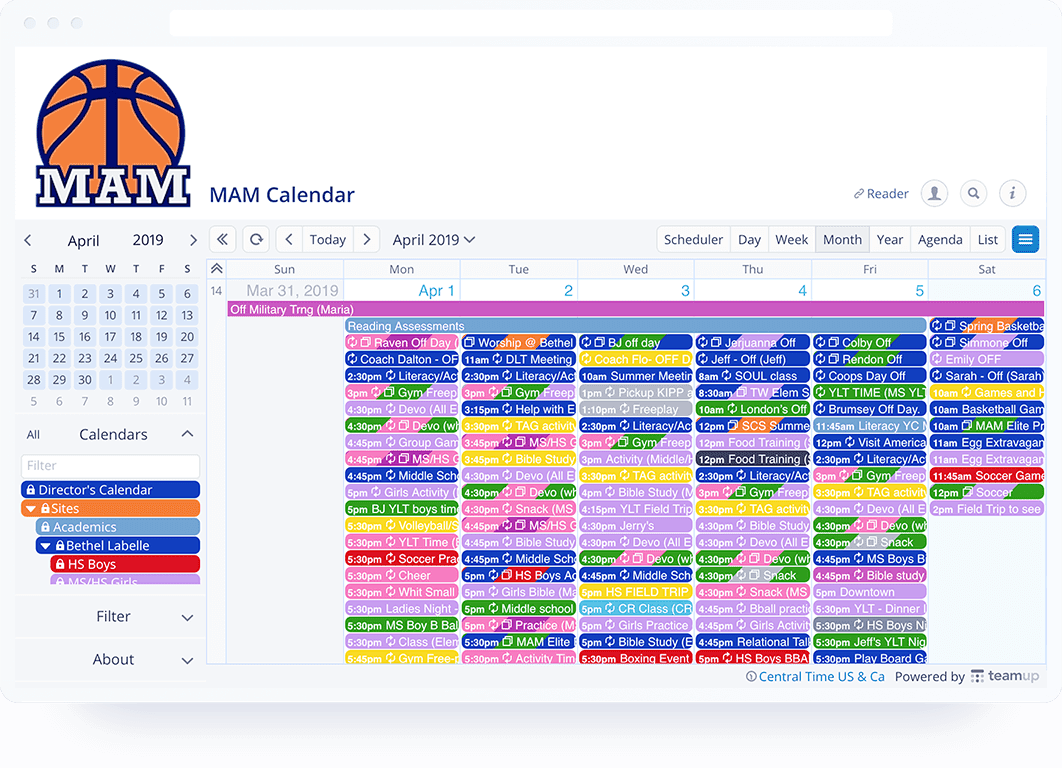
When it comes to vacation management, the recommendation to create a specific calendar with a flashy color seems on point again.
Zapier templates to integrate PTO requests in Jira
Connecting HR and payroll systems to Jira is possibly the best way of centralizing your requests for paid time off. Be it sick leaves, child care, or simply that field trip you always wanted to visit every filming location for your favorite show, posting the absence once should be enough. The HR system will let your organization know. Out of Office will make Jira know.
Personio – Best in class HR Platform for SMEs
This Munich based startup is leading the market of HR solution for SMEs. In comparison to other contenders in this list, it serves larger organizations of up to 2,000 employees and allows to manage payroll. Another big difference is how Personio is going into the realm of people automation, which is “about speeding up HR-dependent work in other applications by automatically populating HR information and triggering actions within those apps instead of doing it manually. This could, for example, involve creating and issuing an employment contract, or turning access to certain apps on or off when a person joins or leaves an organization.” (Source: Techcrunch).
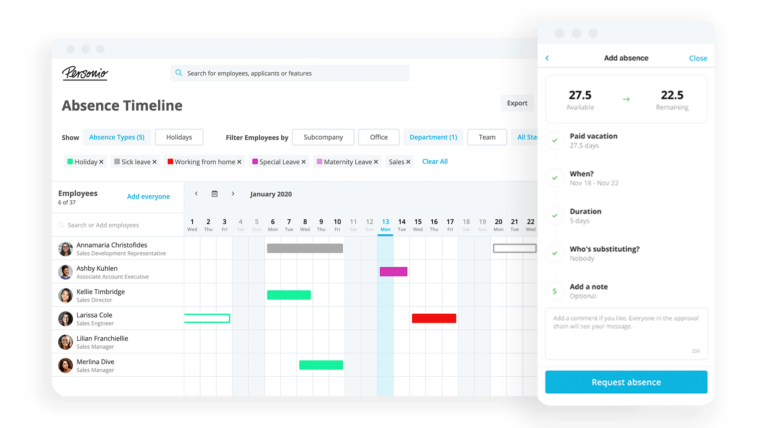
Evaluating the tool is not as easy, since it’s necessary to first request a demo. However, once inside Personio, there are many pleasant surprises.
Bamboo HR – Best trigger for time off requests
Bamboo HR was founded in 2008 in Utah and aims at small and medium businesses who can’t afford the pricier corporate HRIS SaaS.
One of the nicest things we stumbled upon while we were testing BambooHR is the amount of configuration that you can do with their Zapier trigger.

As you can see in the screenshot, it’s possible to make many decisions about how to capture and filter time off requests. It’s possible, for example, to use an admin account and limit it to a particular employee. With that, admins can set up zaps on behalf of their employees to make sure that they really enjoy their time off. Knowing that BambooHR has a policy of not allowing employees to work over 40 hours per week, I can see how this feature has been built to centrally shut down calls for action during time off.

It’s also possible to restrict time off based on the level of access and the status. This makes it really easy to cancel existing out of office rules in Jira grabbing time off requests that have been superseded, suspended or canceled. If you’re a customer or are evaluating, give it a go!
GoCo – Best electronic signature
Electronic signatures are one of the differentiators for GoCo. Their focus on compliance and simplifying the red tape involved in the hiring process can be very attractive for companies that work remotely and don’t want to lose precious time sending envelopes with printed contracts (if anybody does that anymore).

Another GoCo core value is to give customers what they want, making it very easy to jump on a call with support and discuss needed improvements.
On the downside, connecting to Zapier using the username and password feels less secure than other options that could have been implemented. And it also failed repeatedly in our tests. We’re used to passing an API Token for this, so going through a password trauma seemed unnecessary. Some users may not go through the hassle.
However, once you’re on the platform, requests for time off and vacations are straightforward, and so should be the connection to Jira cloud through Zapier.
Factorial HR – Best User Experience
Factorial is a trendy startup from Barcelona that wants to become the Workday for SMBs. As of September 2021, they counted over 75,000 customers with an average size of 100 employees. And when you look at their product, you can see why customers like it. You can tell how new their product is by their focus on UI. Simply, a beautiful experience!
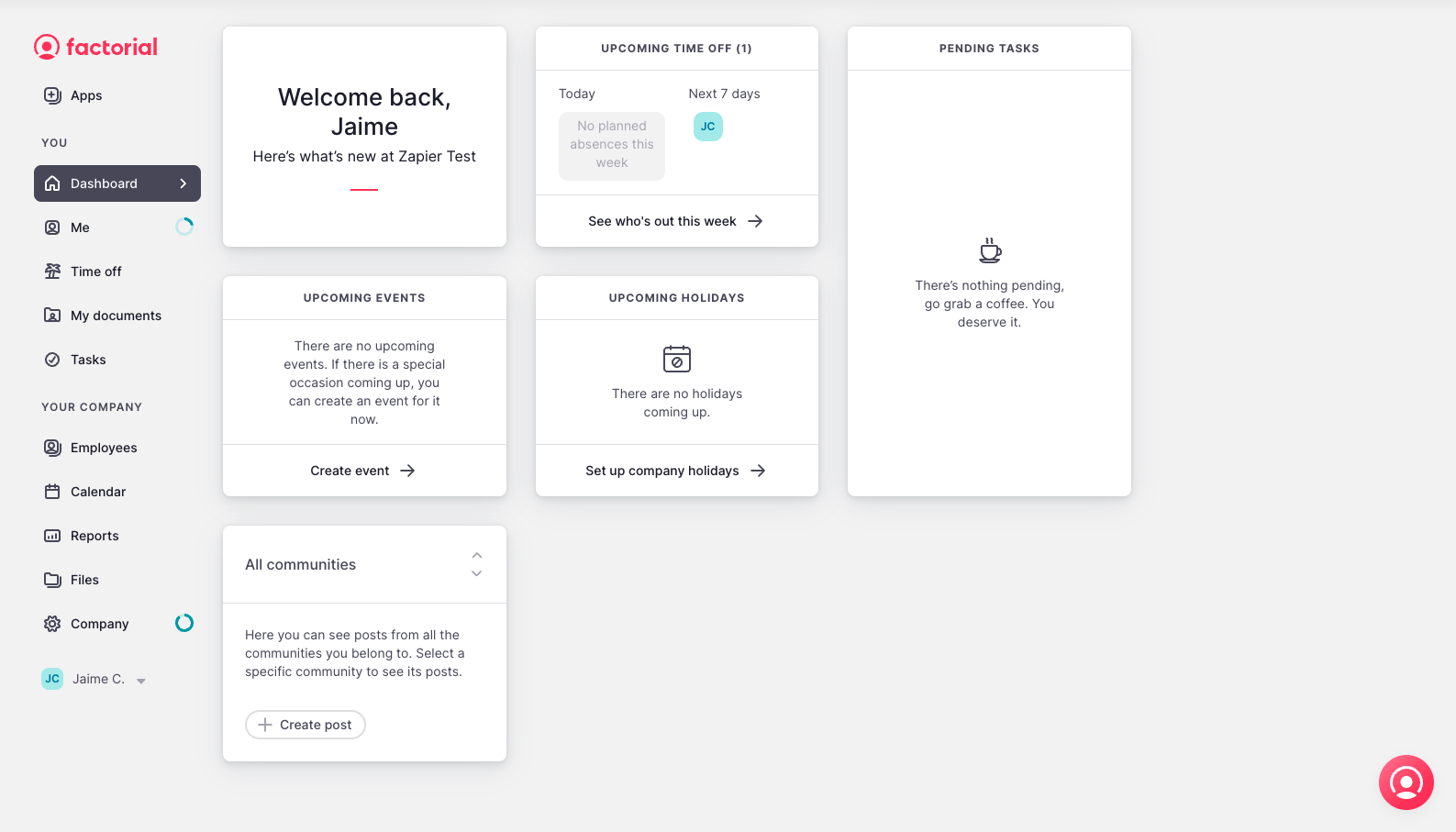
Requesting time off is really simple. There’s a specific dashboard where each employee can see their time off and make a new request. Different leave types are also available. For HR managers, this platform offers a great overview of everything that’s going on. For employees, it’s also a pleasant way of keeping track of their time.
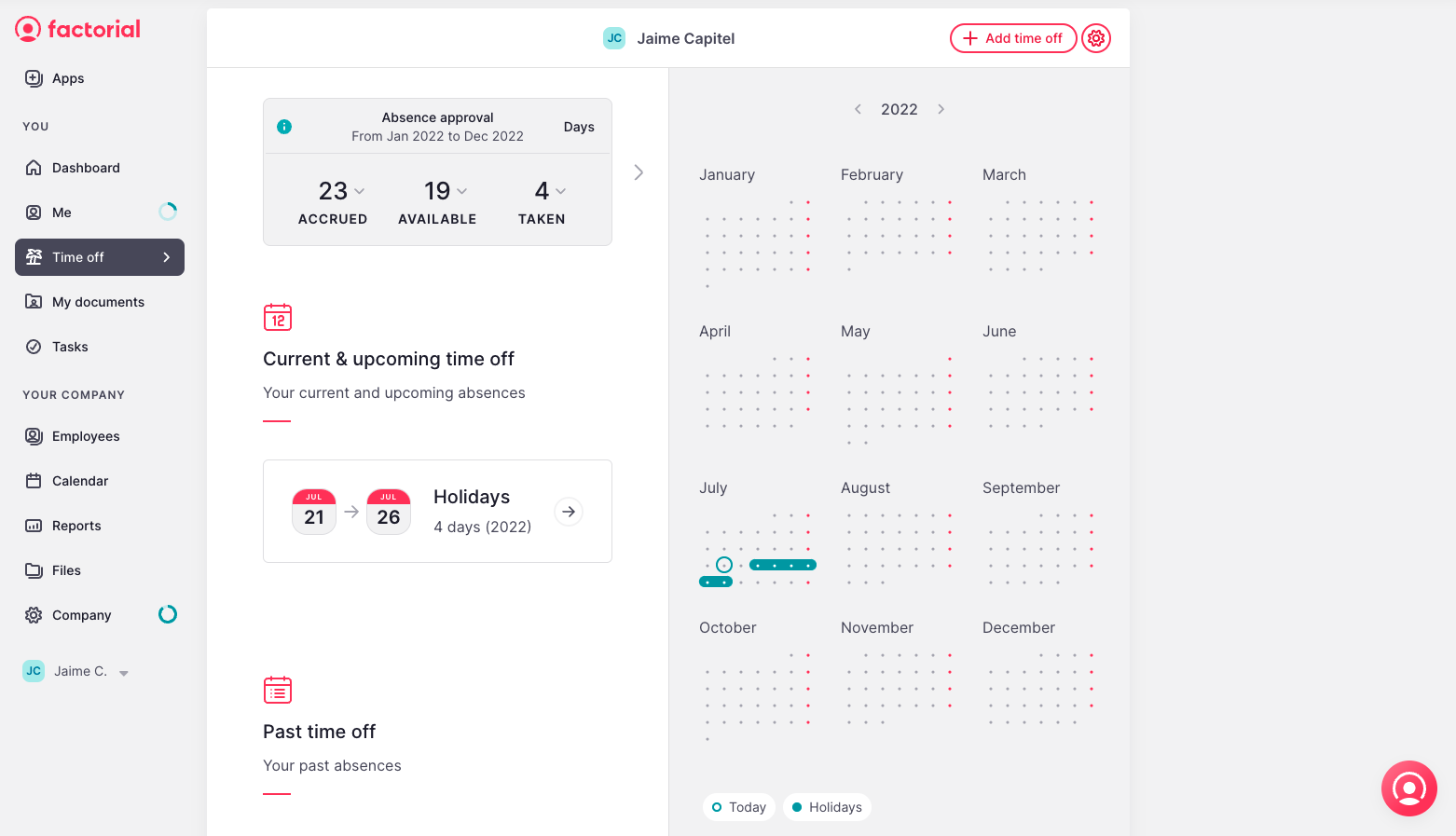
Besides time off, Factorial offers a one-stop-shop with internal communications, monitoring employee performance, or managing new hires, onboarding included. However, it doesn’t offer any options to manage payroll.
Zapier templates to set vacations on and off
Slack – The chat platform that is always on
Together with your web browser, Slack is possibly the one app you have always open and visible on the screen of your laptop. So creating automations from there is always an interesting option.
One thing you can do is create a dedicated channel where team members can post that they are taking the day off for personal reasons. To end the leave on the same day, simply map the time of the message with the end date. Out of Office will only take the date and create a rule for that day. You will be back at your kanban board tomorrow.
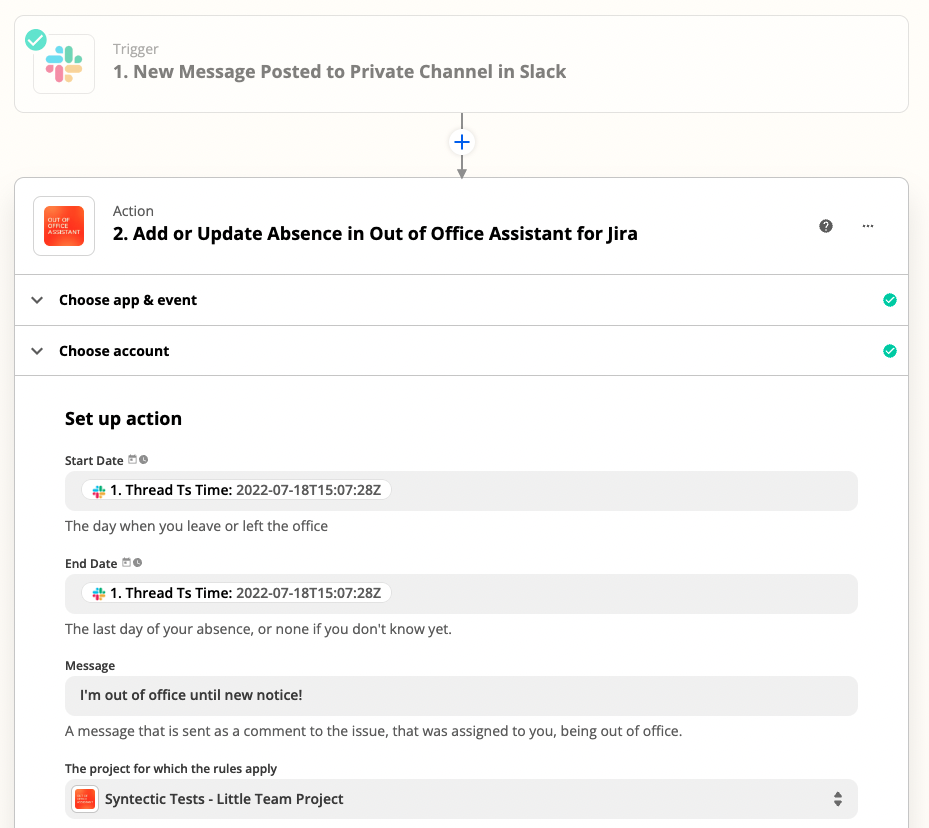
If you want to have a more articulated workflow from Slack, you can also install the Slack app for Out of Office Assistant for Jira (currently in beta), which will let you do pretty much anything with a friendly form.

Something our team really loves is activating the Out of office rules for Jira with the status emojis. Palm trees for the people!
Teams – The other chat platform that is always on
You company is using Teams instead of Slack? You can still build an automation to activate Out of Office rules when posting to a specific Teams channel.

The true challenge here is to add Zapier to your team if it’s not there yet. But hey! You’re not the first one doing that and someone wrote great instructions.
Google Sheets – The data dump that works
If you’re not using any other system to track your vacations, it’s never too late to adopt one and just Do It Yourself.
Create a spreadsheet, put some basic column names for the start and end dates, create another column for the Out of Office message, and even an optional one to write down who should be covering for whoever is on leave.

Spreadsheets are a great experimental playground. The same process can easily be translated into multipurpose work management tools like Airtable (where it’s easier to build a user picker) or Notion.
Conclusion
This collection of templates is just a small sample of what you can accomplish. As I just mentioned, there’s a number of multi-purpose apps like Trello, Notion, Airtable or Smartsheet that can easily be leveraged for the same purpose.
And it gets more interesting. I didn’t mention that you can also create zaps to deactivate an existing rule. A good trick for those who prefer open-ended plans: instead of scheduling the end of your vacation before time, you can kill the rule when you come back to the office. Read everything in the documentation!
Would you like step by step help with any of these templates? Is there any additional use case that you’d like to explore? Feel free to send a request through resolution.de/support with your use case! We could develop a trigger. For example, when a new rule is activated, a Slack message could be sent to the coverer to warn them that they’re now on duty. If that’s something that would interest you,



